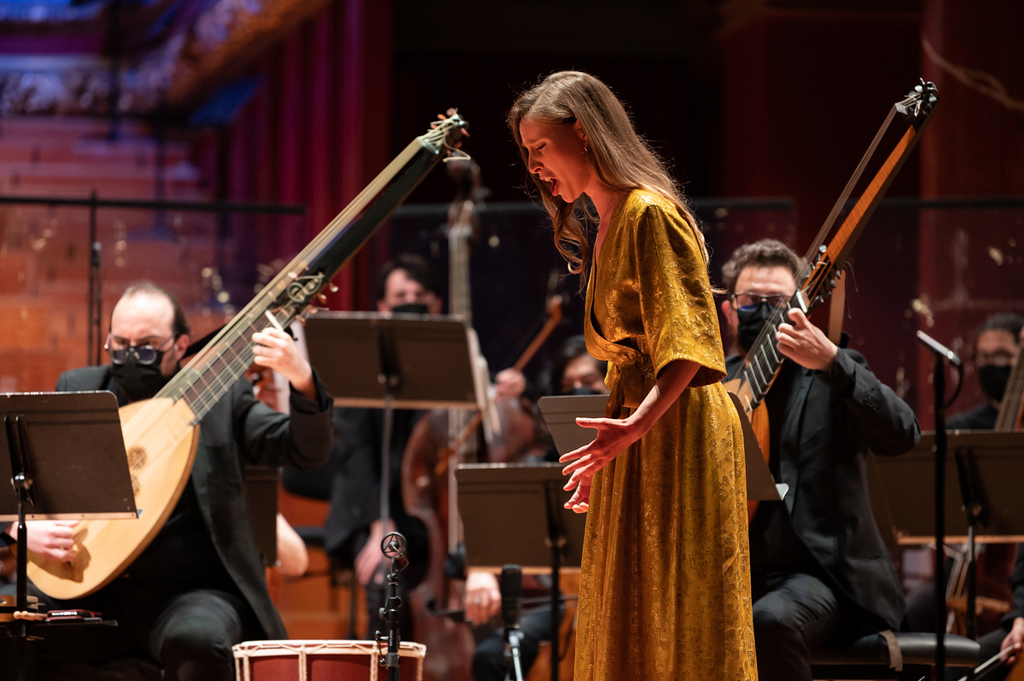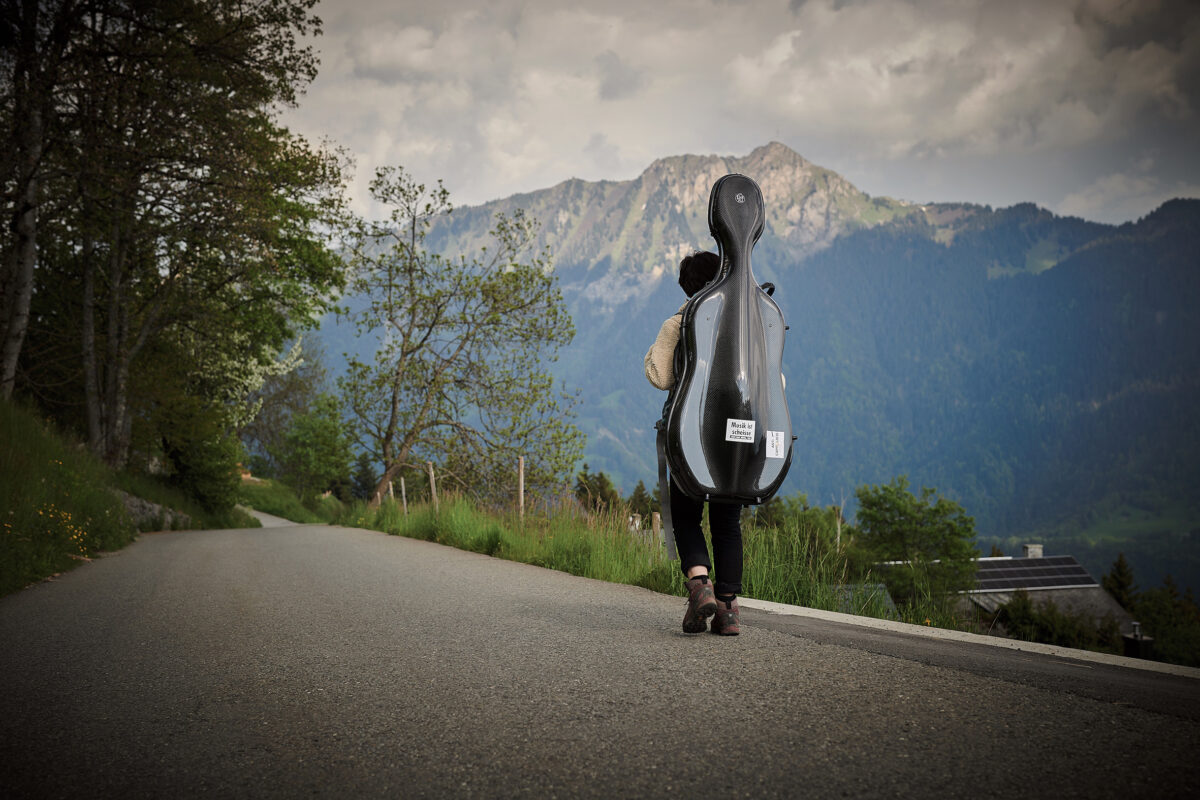Looking for the original sound
The historically-informed performance practice movement (“HIPP”), born of the desire to play on period instruments and to discover and faithfully adhere to the intentions of the composer, has witnessed major evolutions since its inception in the middle of the twentieth century. We take this occasion to look at the teaching of early music and period performance, and its place in today’s musical landscape.

Music and music practices of the past have long been a matter of study and interest – from the establishment of an Academy of Ancient Music in England in the eighteenth century, to Felix Mendelssohn’s “rediscovery” of Bach’s St Matthew Passion in 1829, to twentieth-century revivalists such as Paul Sacher, Wanda Landowska, and Arnold Dolmetsch.
The early music scene in Switzerland, western and northern Europe and beyond is alive and well. Although the pioneers of the early music revival in the twentieth century originally focussed their gaze on music from the Medieval period to the Baroque, the perimeters of the field are ever-expanding, extending now to the Classical and Romantic periods and indeed to music of the early twentieth century. A cursory view of tertiary programmes offered at universities and conservatoires in Europe reveals a plethora of courses which reflect this interest. This appetite for early music is reflected in the profession and at the concert-programming level too. Early music has become part of the canon. It is not unusual to see an opera by Monteverdi programmed alongside one by Verdi, nor to see string players who are required to turn their hand to Brahms one night, Mozart the next, and Corelli the next, all with different instruments, appropriate bows, and a musical agility demanding that they be masters of all three styles.
This is, of course, encouraging for those working and aspiring to work in the field. More than a century after the emergence of the historically-informed performance practice movement which has become known by its acronym, HIPP, and the accompanying blossoming of specialised orchestras, festivals, and degree programmes dedicated to worshipping at its altar, it is timely to reflect on the challenges and rewards that this increased appreciation for the music of the past entails. For the need to approach “old” music and how it is taught with new eyes, new ears and fresh perspectives remains pressingly important. What follows is necessarily but a brief overview (or in fact reiteration) of some of the early music movement’s current challenges and future prospects and an insight into how we teach early music at the Haute école de musique de Genève (“HEM”).
Firstly, it is crucial that we maintain our intellectual and artistic curiosity. The 1970s and 1980s witnessed the birth of a large corpus of early music recordings which constitute an invaluable source of inspiration, galvanised interest in previously-unknown music and infected new audiences with an enthusiasm and delight for the richness and emotion of early repertoire. All too often, however, these recordings can be taken as early music gospel. Interpretations are slavishly re-produced by new generations of students, creating a universe of “received performance practice” which runs parallel to and sometimes in contravention of “historical performance practice”. Such an approach is mis-guided. Our knowledge of past practices is continually evolving. We need to be forever re-probing the sources and refreshing our performance perspective, based on the results of the latest musicological and applied research.
This requires a certain degree of daring and audacity for performers on the one hand, and a leap of faith for audiences on the other. Over the past centuries, criteria for evaluating musical performances have shifted. It is axiomatic that today’s listeners have become acclimatised to highly-edited recordings, creating an expectation and demand for exacting standards of ensemble playing and perfect intonation. However, to take the example of singing, we know that such an immaculate result is not in fact necessarily reflective of historical realities. Audiences and performers in the seventeenth- and eighteenth-century, for instance, were far less pre-occupied with perfect synchronicity between the continuo section and the singer, intonation and the maintenance of a regular tempo. Rather, the moving of the passions was paramount. Music was considered an oratorical art and excellence was achieved only when the singing-orator fulfilled his or her persuasive role by creating a sonic and indeed visual incarnation of the passions in his or her tone of voice, expressive pronunciation, posture, and gesture, allowing the music to pass from the ear to the soul of the listener. This persuasive configuration is perhaps alien to modern listeners and performers. When we are ambitious and faithfully apply the instructions from composers and theorists rather than cherry-picking those pieces of advice which are apt to produce sounds which we find good and acceptable, put quite simply, the result is not always pretty.
Moreover, what we may think of as an historically-informed performance of a piece of early music is invariably but one (often sanitised) incarnation of a piece. In fact there were and are countless legitimate “versions” of historically-informed performance, with interpretations varying vastly depending on context, players, conditions, instruments, and social and gender expectations amongst other factors. Similarly, although our conception of early music is largely Eurocentric, there is of course more than one “early music”, too; in repertoires where there are few written records (such as Medieval music and ornamentation practices of the Renaissance), researchers are turning more and more to oral traditions, such as those found in Mediterranean countries. The historically-informed interpretation of non-Western music (particularly the written music of East Asia) is a further rich field which is in the course of being developed. The more we acknowledge and explore this aesthetic and performance plurality and spectrum of traditions, the closer we remain to the values of the HIPP movement.
Faced with these challenges both positive and negative, confronted with an increasingly tough fiscal and cultural environment, and in an ever more competitive early music market, how can we best prepare the future generation of early musicians to adapt to and eventually shape and lead this ever-evolving field? How can we stay faithful to the original goals of the HIPP movement, yet maintain our originality, our artistic voice and our personal authenticity?
Time and space will allow only a few brief observations. In my role as head of the early music department (DMA) at the HEM, I feel well-placed to say that we tackle with relish this multi-faceted challenge. The department is a centre of learning and research dedicated to vocal and instrumental music from the Middle Ages to the dawn of Romanticism. We offer highly-specialised courses for singers and musicians on period instruments, focussing on historically-informed performance practice based on the latest musicological and applied research. We offer courses for those with an early music background or undergraduate degree, as well as MA courses on period instruments for students with a Classical music background.
Today’s early music graduates have to be not only excellent performers, but also researchers, creative entrepreneurs, and leaders. The DMA seeks to prepare its students to respond to these professional demands by focussing on three principal axes: firstly, the development of excellence on the student’s instrument or principal discipline. It goes without saying that in an increasingly competitive market, our graduates must be the very best both technically and musically. Our second pillar is the development of an inquisitive and critical mindset in which students are encouraged to confront the latest musicological and applied research and to constantly question and reflect on their artistic practice. As outlined above, this is fundamental. Finally, we place great emphasis on connectivity with the profession, and therefore regularly invite high-profile conductors, teachers and musicians who are experts in their field to coach and direct our projects. We put in place side-by-side initiatives, audition days and events linking students with their future professional peers in order to facilitate the development of a specialised network, allowing them to build the foundations of a successful and enriching early-music career. The DMA’s entire calendar of teaching and activities is conceived with these three pillars in mind.
New angles of inquiry are constantly emerging in our domain, which invite us to move away from a complacent position of “received performance practice”. For example, the acquisition of fresh knowledge by the emulation of the practices discernible from early recordings of bel-canto singers and the study of early recording technologies represent a relatively new way of approaching the study of past vocal practices. In a similar vein, recent years have witnessed a burgeoning interest in female composers and the agency of women in past practices, which has gone hand-in-hand with research into figures such as Antonia Bembo and the trail-blazing Italian Renaissance composer, Maddalena Casulana. Further, the digitisation of resources and new technologies have allowed for new ways of disseminating and recording research results. It is hoped that the lure of these new facets of endeavour will prove compelling sources of interest to the next generation, heralding in a new era of originality in our approach to ancient practices.
Elizabeth Dobbin is Associate Professor and Head of the Early Music Department at the Haute école de musique de Genève.







